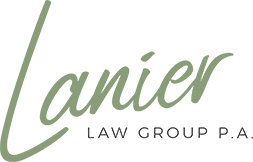Every workplace building is required to undergo a safety audit. This important inspection will determine whether or not the building places workers at harm in any way. If you are at harm because of your workplace building, and suffer permanent or serious damage, then you can even seek damages from your company for putting you at risk.
During the building’s initial safety audit, an inspector will walk around the entire premises. This means that he inspector will look at the entrances, sidewalks, hallways, rooms, and all sorts of nooks and crannies. If the building is more than one story, than it will probably be required to have an elevator. As well, the inspector will make sure that the layout of the building does not pose immediate slip and fall hazards. Uneven sidewalks, curbs that are not prominent, or poorly lighted parking lots are all issues that could facilitate a fall.
As well, the audit should involve an inspection of all possible electric hazards. This means that the inspector should make sure that loose wires or poor electrical engineering won’t put workers at risk to a malfunction or a fire. There should not be outlets that are overwhelmed with appliances, or bad fuses in the office. The inspector will also check the fixtures throughout the property, such as sinks, lights, toilets, banisters, and any other permanently placed items. If they do not adhere to building standards, then the company must be notified. Every workplace is required to have even stairways, so that they do not present a trip hazard.
They should have some sort of carpet or rubber buffer to help people to avoid falls. In addition to all of this, workplace buildings must have enough exits for everyone to safely leave a building. Companies can be sued if they were not able to get everyone out during a fire evacuation. The smoke and carbon dioxide alarms in each building should be fully operable, and there should be an appropriate amount of fire extinguishers. The auditor should also look to make sure that there is no mold growing in the building.
This can be a health hazard because inhalation can cause a disease to erupt. If any of these qualifications are not met at the audit test, the building is required to make changes. Any office that fails to make these changes can end up in serious legal trouble with the government. As well, if you are injured because your office did not take precautionary measures to prevent a safety hazard, then you can charge for premises liability or seek workers compensation. Talk to a personal injury lawyer at the Lanier Law Group, P.A. today to discuss your case and get representation in court!

